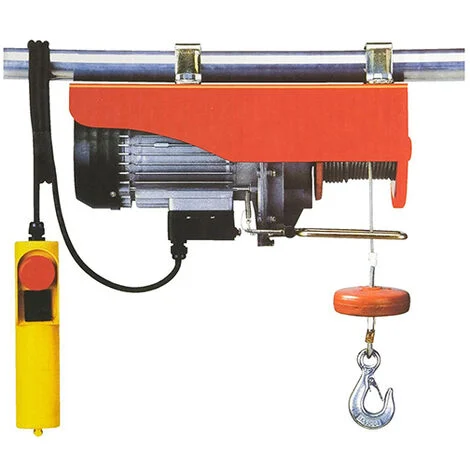Electric hoists play a pivotal role in modern manufacturing, significantly enhancing operational efficiency and safety. These machines, designed to lift and move heavy loads with minimal human effort, have become essential tools in various industries, from automotive to aerospace and electronics. In an era where productivity and precision are critical, electric hoists offer a reliable solution to handle heavy equipment and materials that would otherwise be challenging or time-consuming to move manually. One of the primary contributions of electric hoists to manufacturing efficiency is their ability to perform repetitive lifting tasks with consistent precision. Unlike manual labor, where fatigue and errors can compromise safety and accuracy, electric hoists operate with mechanical consistency, reducing the risk of mistakes. This precision is especially crucial in industries where even minor deviations in material handling can lead to costly errors in production, such as in the assembly of automotive parts or the positioning of components in complex machinery.

The speed and power of polipasto eléctrico also allow manufacturers to expedite workflows. These devices can lift and move loads much faster than traditional manual methods, significantly reducing downtime and bottlenecks in production lines. By automating the movement of materials between different stages of production, electric hoists streamline processes, enabling faster turnaround times and ultimately increasing the overall output of a manufacturing facility. Another key benefit of electric hoists is their contribution to workplace safety. Lifting heavy loads manually can lead to injuries, including muscle strains, back injuries, or more severe accidents. The use of electric hoists minimizes the need for workers to physically handle large and heavy items, reducing the likelihood of workplace accidents. This safety enhancement not only protects workers but also decreases the likelihood of operational disruptions due to injuries or equipment damage, further improving manufacturing efficiency.
Modern electric hoists are equipped with advanced features, such as variable speed control, precision load placement, and overload protection. These features allow operators to have better control over lifting operations, ensuring smoother and safer handling of loads. Variable speed control is particularly useful when precision is needed for delicate materials, as it allows for gradual, controlled lifting. Overload protection mechanisms prevent the hoist from being used beyond its rated capacity, further enhancing safety and preventing equipment failure. Moreover, electric hoists are adaptable to a wide range of manufacturing environments. They can be mounted on overhead cranes, gantry systems, or fixed locations, making them versatile for different manufacturing needs. This adaptability ensures that electric hoists can be integrated into existing production lines with minimal disruption, making them a flexible tool for improving efficiency across various industries. As industries continue to push for greater efficiency and precision, the role of electric hoists in supporting these goals will only become more critical, contributing to the advancement of modern manufacturing.